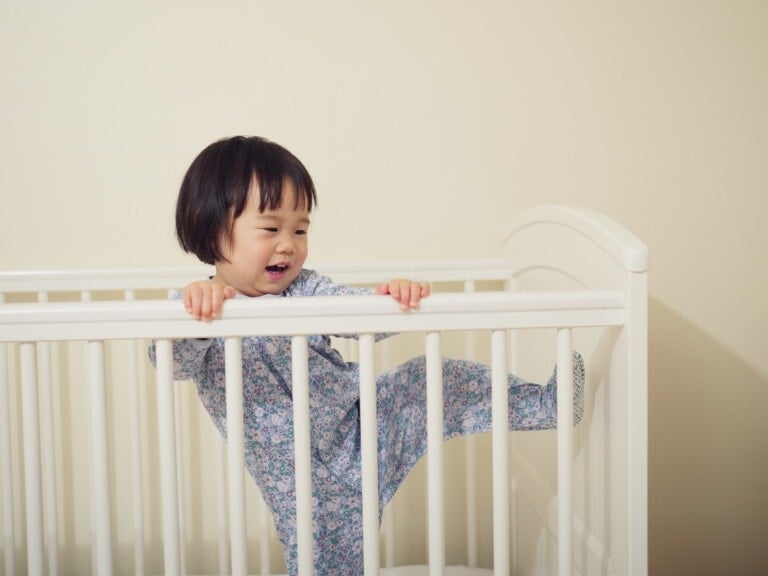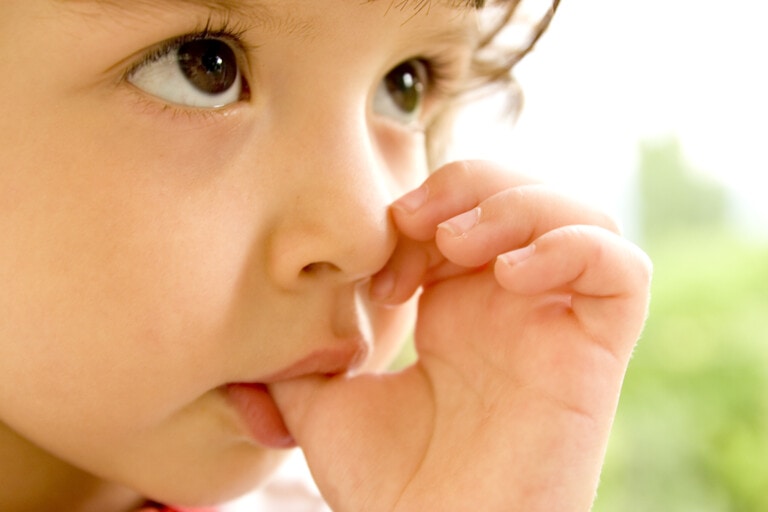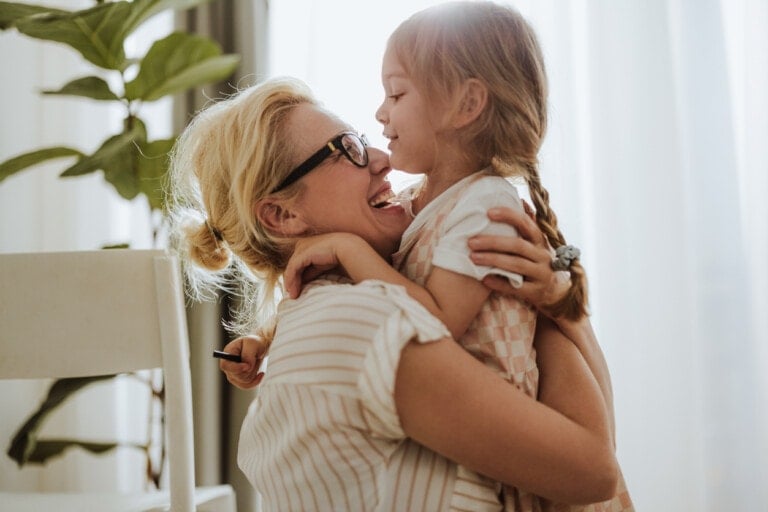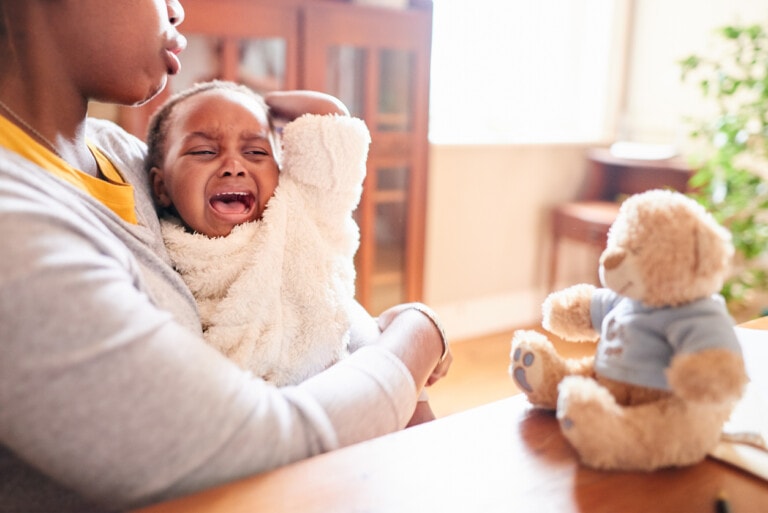If you spent the entire day running, climbing, jumping, singing (and never sitting down), chances are, you’d be exhausted by bedtime and pass out as soon as your head hit the pillow. So why won’t your toddler sleep despite their action-packed days (and tired parents begging them to)?
Toddlers are an enigma. Much of their sleep habits and sleep needs run counterintuitively to adults. They’re not impossible to figure out, though. You just need to have a few tricks up your parenting sleeve, and that’s what this article will give you!
Toddler Sleep Tips for the Tired Mom
Sleep fuels growth and development (and helps parents recharge). The quicker you implement the following tried-and-true toddler sleep tips, the quicker your little guy or gal will start sleeping more easily.
Tip #1: Consistency Is Everything
The best way to expect consistency from your toddler is for us parents to be consistent. When your child’s days follow a familiar routine and flow, parents typically see less resistance and fewer meltdowns when it’s time to sleep. That’s because toddlers learn to accept that certain things happen in sequence or at certain times. (“I always take a nap after lunchtime.”) If each day presents a new arrangement of activities, the unfamiliarity can make your toddler feel insecure or resistant.
A consistent routine is essential for your toddler to sleep well every day. Even if your little one doesn’t like their routine, they benefit significantly from it!1 And they will get used to it over time. Your toddler’s sleep schedule should include:
- Waking them at the same time each day
- Consistent nap time
- A relaxing bedtime routine
- Consistent bedtime
Wait, what?! “Am I really supposed to WAKE UP my toddler?” I know it sounds unbelievable, but if your toddler wakes at the same time every morning, they’ll go down for their nap easier. It’s the same with bedtime. You’re setting their body clock to sleep at the same times each day, which helps them fight sleep less. (Which is every parent’s dream!)
Think of it like this: toddlers can get fussy with the slightest change. If their nap is an hour off, it can mess with their mood for the entire day, making everything else more difficult. So, the more you set a consistent schedule and stick to it, the more your toddler benefits. They sleep easier and better, their moods improve, and everyone is happier!
Even if there’s an initial difficulty waking them in the morning or getting them down at bedtime for a few days, the payoff is HUGE in the end. If you’ve got a wild child, then bedtime may be anything but relaxing! Starting a bedtime routine that focuses on calming and relaxing your little one is a necessity.
Tip #2: Don’t Ditch the Crib!
Does this sound familiar? Your child’s second birthday is approaching, and you think it’ll be “so cute” to get them a big kid bed with Paw Patrol sheets because they’re such a big kid now. Many parents equate the crib with babies and think their toddler no longer needs it around age two. Hands down, keeping them in the crib is the easiest thing you can do to keep your toddler sleeping well! Only transition your child to a toddler or full-size bed once they repeatedly climb out of the crib, which becomes a safety risk.
Don’t ditch the crib until your child is three years old! They make toddler beds so cute these days, and I know it feels like a milestone for your little one. But the truth is that a child younger than three lacks the cognitive maturity and impulse control to stay in bed all night. So, a bed with boundaries (aka a crib) is another big toddler sleep tip.
So, what do you do if your toddler is already climbing out of the crib? Try these tips before you decide to ditch the crib:
- Remove anything from the crib they could use to climb out, like bumpers, stuffed animals, or nearby furniture.
- If your crib has uneven sides, turn it around so the shorter side is against a wall (and the taller side faces out). This can raise the side of the crib by a few inches right away and keep your toddler safely inside for several more months.
- Have your toddler sleep in a Pack n Play (or travel crib) they can’t climb out of. Again, this could buy you several months of crib sleeping (and your sanity)!
Tip #3: Find Ways to Ease Your Toddler’s Separation Anxiety
As your child enters toddlerhood, they go through some pretty significant changes. They learn to walk, communicate, explore their world, and socialize with others. It’s a hectic period, developmentally speaking. It’s important to know that whenever your child gains a new skill, reaches a big milestone, or goes through a growth spurt, you might see them regress temporarily in another area.
With toddlers, it’s normal for separation anxiety to appear during big milestones or periods of change. Although it sounds intense, it’s a completely normal phase of development.
Signs of Separation Anxiety
A child with separation anxiety will often cry when you leave the room, cling to you when there are strangers around, or need to be near you throughout the day. Toddlers experiencing this may be loud and insistent about not wanting to be separated from you, whether at daycare drop-off when it’s time to sleep or when you just need a few minutes to go to the bathroom!
Let me explain why separation anxiety feels so real for your toddler. It’s a big shift from crawling on all fours to standing upright and walking with two feet. Suddenly, their world looks and feels different. Change feels scary, so our little one clings to us more to feel safe and protected. Although most toddlers love exploring their newfound independence, it’s also quite intimidating!
Biologically speaking, change brings vulnerability. So when our child feels vulnerable, they need all the protection and love they can get, even if it’s through screaming and throwing tantrums when you need to leave. You may see your toddler suddenly crying and clinging to you at bedtime. That’s because this marks a period when they’ll be away from you.
Luckily, I’ve gathered my top tips for managing toddler separation anxiety. You can use these throughout the day and also at bedtime.
Tips for Managing Toddler Separation Anxiety:
1. Introduce a Lovey
After 12 months old, it’s safe to introduce a lovey (or stuffed animal) for sleep. Think of it as a little buddy your toddler can cuddle to feel comforted and secure. Make sure there are no parts your little one can bite off (like plastic eyes). Have them snuggle their lovey during their bedtime routine or carry them around the house to get comfortable with them. All children don’t take to a lovey right away, so feel your child out and see if it helps.
2. Spend (More) Quality Time Together
One-on-one time with your little one helps ease the stress of separation anxiety. Make an extra effort to put away your phone and have lots of eye contact, smiles, and cuddles with your toddler a few times a day. Ten minutes of one-on-one quality time can be enough to “fill their tank” and help them feel comforted and relaxed. If your toddler has been fighting bedtime, plan for extra quality time in the evening to help them fall asleep more easily.
3. Come up With a Comforting Phrase
This is especially helpful in easing separation anxiety. And it’s simple! Start using a familiar phrase each time you leave, reminding them that you always come back. A phrase like “Mommy’s coming back” or “I’ll be back soon, I love you” can help your toddler understand that you will ALWAYS return. And each time you return, say something like, “See! Mommy came back!” They’ll start to make the connection and gain trust.
Say it when you play peek-a-boo or get up to do something around the house. Repeat the phrase so often that you feel like it’s TOO much (and then some more). Kids love repetition. Then, they might not take it as badly the next time you need to leave the house for a bit. Just remember to stick to the same phrase and keep it light and happy!
Toddlers thrive when their world feels familiar, predictable, and safe. A consistent daily routine will help your toddler sleep easier because their body clock is set to sleep at predictable times and they know the flow of their day. Also, having your toddler sleep in a crib as long as possible keeps them safely contained and prevents distractions like wandering around the house. Finally, easing your child’s separation anxiety with comforting phrases and extra quality time with you helps avoid bedtime struggles. By implementing these three toddler sleep tips, you should see your little one start snoozing much easier!






























